Social media amplification: The ultimate guide to expand your reach

Table of Contents
Social media amplification is a strategic ripple effect of promoting content on social media.
Through effective amplification, content gains momentum beyond your immediate network. This can happen via promotion from paid ads, word-of-mouth or a combination of both.
And amplification is the cornerstone of an effective social media marketing strategy.
But effective social amplification isn’t just about paid promotion or boosting content.
In this post, you’ll learn how to consistently amplify your content to reach relevant customers. We’ll also break down actionable tactics and examples of social media amplification done right.
What is social media amplification?
Social media amplification is the process of increasing your content’s reach beyond your immediate followers via organic shares, paid promotion and third-party advocacy.
Amplification extends across channels and social platforms. For example, a brand might amplify an organic post on Facebook and run it as an ad on Instagram Reels or vice versa.
Consider that paid, owned and earned media all play a crucial role in social amplification, often working in tandem:
- Owned media is content that you control and publish yourself. This includes social posts from your company accounts, serving as the foundation of your amplification strategy.
- Paid media includes social ads, sponsored content and boosted posts. Through paid media, you can quickly target new customers beyond your owned audience.
- Earned media includes organic shares, mentions or reposts from channels like employees, customers or press mentions. This is content that you earn and do not pay for.
Ongoing amplification is ultimately what fuels your social media presence. The benefits of amplifying your social content aren’t one-size-fits-all, but include:
- Increased brand awareness as you introduce your brand and products to new customers
- Improved audience engagement by driving discussions and further visibility
- More lead generation by getting relevant content in front of the right potential buyers
- Greater content ROI by maximizing the value and lifecycle of any given post
How to build your social media amplification strategy
First things first: you can’t do any sort of social amplification without high-quality content.
Because social media engagement only happens when your content is actually worth sharing.
So many businesses get trapped on a hamster wheel of creating content with no big-picture plan for amplification or distribution. This results in poor ROI on content that never gets the chance to be seen, regardless of its quality.
That’s why it’s so important to build a repeatable social media amplification strategy that works across multiple channels long-term. Let’s dig into what you need to get started.
Identify your social amplification goal
Before diving into any sort of content promotion, you’ve got to define clear business objectives.
Especially when concerns of content ROI are greater than ever among your stakeholders.
Think hard about what you want to achieve from the time and creative resources you’re putting behind amplification. Lead generation, driving website traffic or simply increasing brand awareness are all fair game.
Just note that different goals will ultimately inspire different types of content and promotional tactics. Clear goals guide your strategy and help you measure success to optimize future amplification.
Create an action plan based on your goals
Once your goal is clear, tailor your tactics for amplification accordingly. Here’s a snapshot of common goals and which tactics and KPIs to couple them with:
- For brand awareness, lean into earned and owned media such as influencer partnerships and employee advocacy. KPIs for this goal include impressions, reach, follower growth, shares, brand mentions and engagement rate.
- For lead generation, prioritize paid social media campaigns (think: Facebook ads, TikTok Spark ads), gated content or digital events such as webinars. KPIs for this goal include new leads, lead volume growth, cost-per-lead and conversion rate.
- For website traffic, focus on promoting posts with specific calls-to-action that lead to relevant landing pages. KPIs for this goal include impressions, traffic, traffic sources and form submissions from social media.
Once your channels, goals and tactics are aligned, you can start experimenting and measuring to fine-tune your social media amplification strategy over time.
Use social listening to identify amplification opportunities
One of the best ways to make sure your message gets heard is by partaking in the right conversations.
That’s where social listening can save the day.
Through social listening, you can dig into conversations among customers and prospects to identify potential brand advocates. Not to mention content formats that resonate most with your target audience. Consistent listening means keeping a constant pulse on what people want.
For example, a brand might seek out unlinked brand mentions or industry keywords to uncover products or posts that people love. These mentions and the data you gather are a goldmine that drives both your content and amplification strategies.
Encourage audience engagement and user-generated content (UGC)
Anything you can do to drive engagement is a plus to gain visibility with social media algorithms.
This means finding organic ways to encourage comments, shares and saves. This can be done through asking questions, running polls or using interactive content.
Launching a dedicated user-generated content campaign can also help. Getting your audience to create and share content on your behalf is one of the most powerful forms of social amplification. This is where branded hashtags, contests and follower challenges can work wonders.
Granted, you give people proper credit when you promote or repurpose their posts!
A key aspect of both driving audience engagement and running UGC campaigns is promptly responding to comments, tags and mentions. This is where a tool like Sprout Social’s Smart Inbox can help to manage notifications so you never miss a mention across your social channels.

Lean into employee advocacy
Employee advocacy is the active promotion of a brand or company on social media by its employees. Through advocacy, employees can leverage their personal networks and online presence to get company content in front of as many people as possible.
Perhaps the best example of employee advocacy is when a company’s employees boost promotions and content on LinkedIn. This is a proven way to get your content in front of exponentially more people.
Think about it. A company LinkedIn page with 2,000 followers will only get a fraction of the reach of 100+ employees posting to each of their 500+ personal followers.
Done right, employee advocacy can be one of the most authentic forms of amplification as it encourages individual employees to put their personal spin on content promotion. Employee advocacy builds brand trust and credibility while also allowing your brand to control its narrative.
Engage with the creator economy of influencers and brand partners
Partnerships with influencers, affiliates and content creators are yet another powerful form of social amplification.
Recent influencer marketing statistics highlight that brands aren’t just working with more influencers but also using them to make the authentic connections that customers crave.
Building relationships with these individuals at scale can yield amazing results when it comes to amplification, particularly with people who don’t currently know about your brand.
3 Social media amplification examples in action
Let’s look at three effective social media amplification examples across industries, all of which work despite using totally different tactics.
Goldcast
Goldcast highlights how to use employee advocacy across roles to amplify content.
To promote their Webinar Benchmark report, the company had team members share unique LinkedIn posts with personalized captions across multiple formats.

This included a promotional photo, video and even a meme from the company’s CEO.
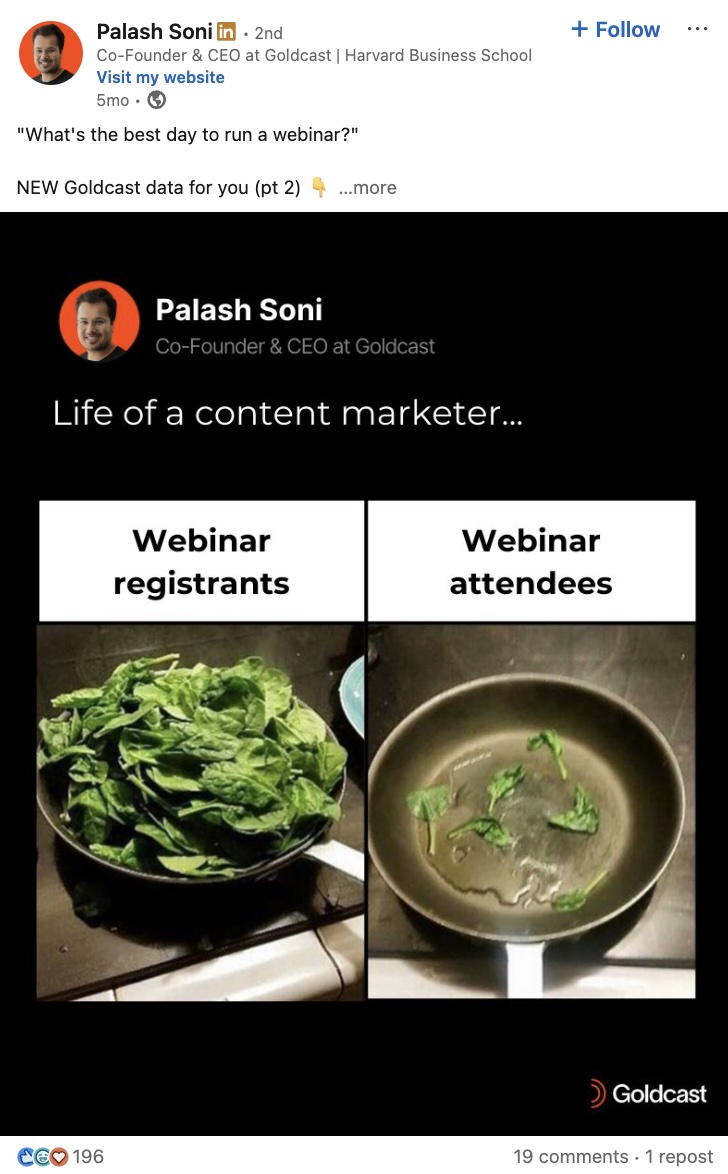
The variation in engagement in these posts proves the value of tapping into your team’s creativity and unique audiences.
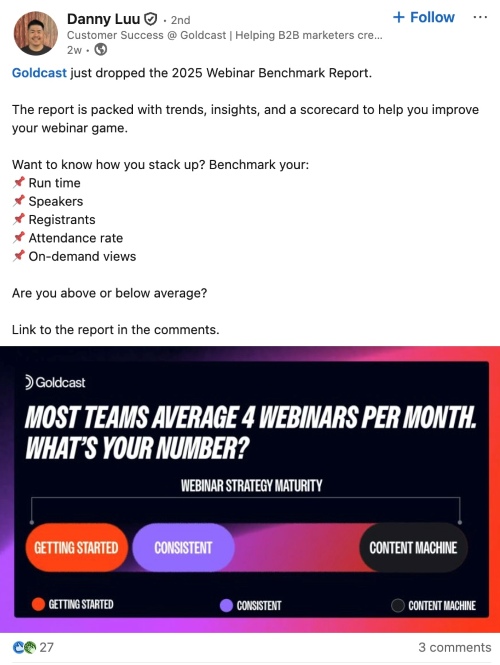
When employees and leadership work together for social media amplification, you’re encouraged to experiment. This example highlights how a single piece of high-value content can (and should!) be amplified by multiple voices to maximize its impact.
Cotopaxi
Cotopaxi leverages UGC to fuel its social amplification strategy on Instagram. By encouraging customers to tag their product purchases with #GearForGood, the brand gets a steady stream of organic content to potentially promote.

This hashtag has already generated thousands of posts from customers who voluntarily tag the brand.

To further boost engagement, Cotopaxi curates a #weeklyherd round-up of posts in which the brand is tagged. This celebrates the brand’s community while also encouraging future shout-outs from fans.

This amplification strategy gives Cotopaxi a consistent way to reshare content and build rapport with its followers, all the while building positive customer sentiment. The brand is a clear example of how to strategically amplify and repurpose UGC.
University of Central Florida (UCF)
Social amplification across multiple channels is crucial, especially for large organizations like universities. Distribution can get complicated with high volumes of content, especially as posts’ performance varies so much depending on the platform you’re publishing to.
UCF highlights how effective cross-channel amplification can work. Note this post that they posted across Facebook and Instagram.

While the posts were basically identical and each performed well, the Instagram post got significantly more engagement.

This shows the importance of distributing content strategically and amplifying across channels when possible. Doing so allows each piece of content you produce to work harder.
4 Best social media amplification tools for 2025
Making amplification work means having software to automate and streamline the process. Here are a few of the best social media amplification tools that can help.
Sprout Social
Sprout Social supports amplification through a variety of features and tools, serving as the ultimate all-in-one solution for brands serious about maximizing their reach.
Tools like social listening can uncover key customer conversations and trending topics, while Smart Inbox notifications keep a pulse on UGC and relevant brand mentions. Meanwhile, AI-driven tools such as automated captions and messages can help you amplify and repurpose content faster.
Sprout’s powerhouse publishing features also allow brands to schedule and post their content across multiple channels at peak engagement times.
With add-on solutions such as Employee Advocacy and Influencer Marketing, Sprout enables you to cover all of your bases when it comes to brand amplification on social media.
Best for: Mid-sized to large businesses, agencies and enterprise teams

Start your free Sprout Social trial
Planable
Planable simplifies content planning and approval, allowing teams to collaborate on content for promotion and cross-posting. Like Sprout, the tool has its own optimal timing and collaboration features to help teams cover more ground when promoting content and responding to customers.
Best for: Agencies, content teams and small to mid-sized businesses
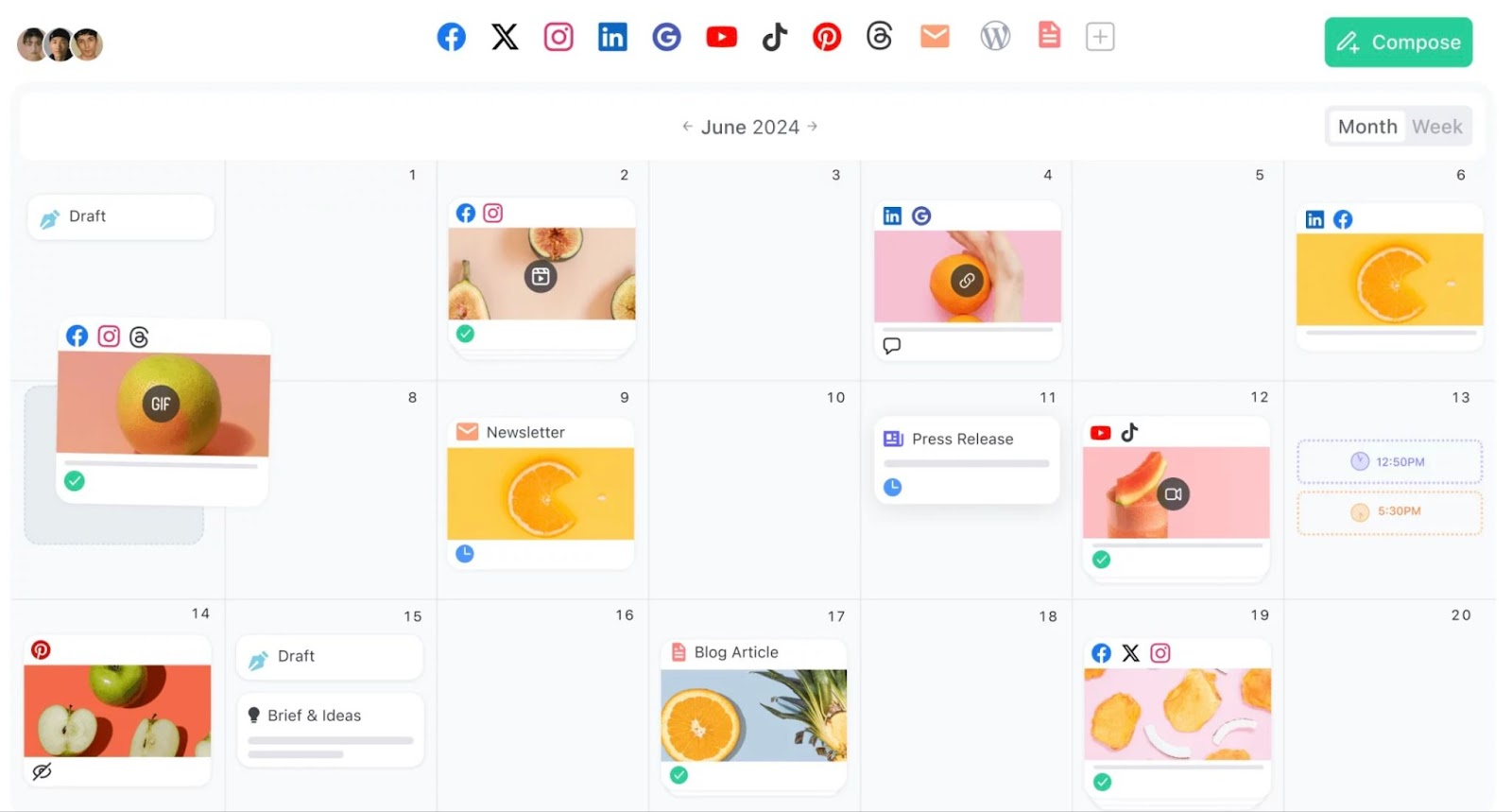
Sprinklr
Sprinklr offers enterprise-level social listening, publishing and analytics tools to amplify content at scale. The platform has built-in integrations with OpenAI to assist with content boosting and repurposing across channels.
Best for: Large enterprises and global brands
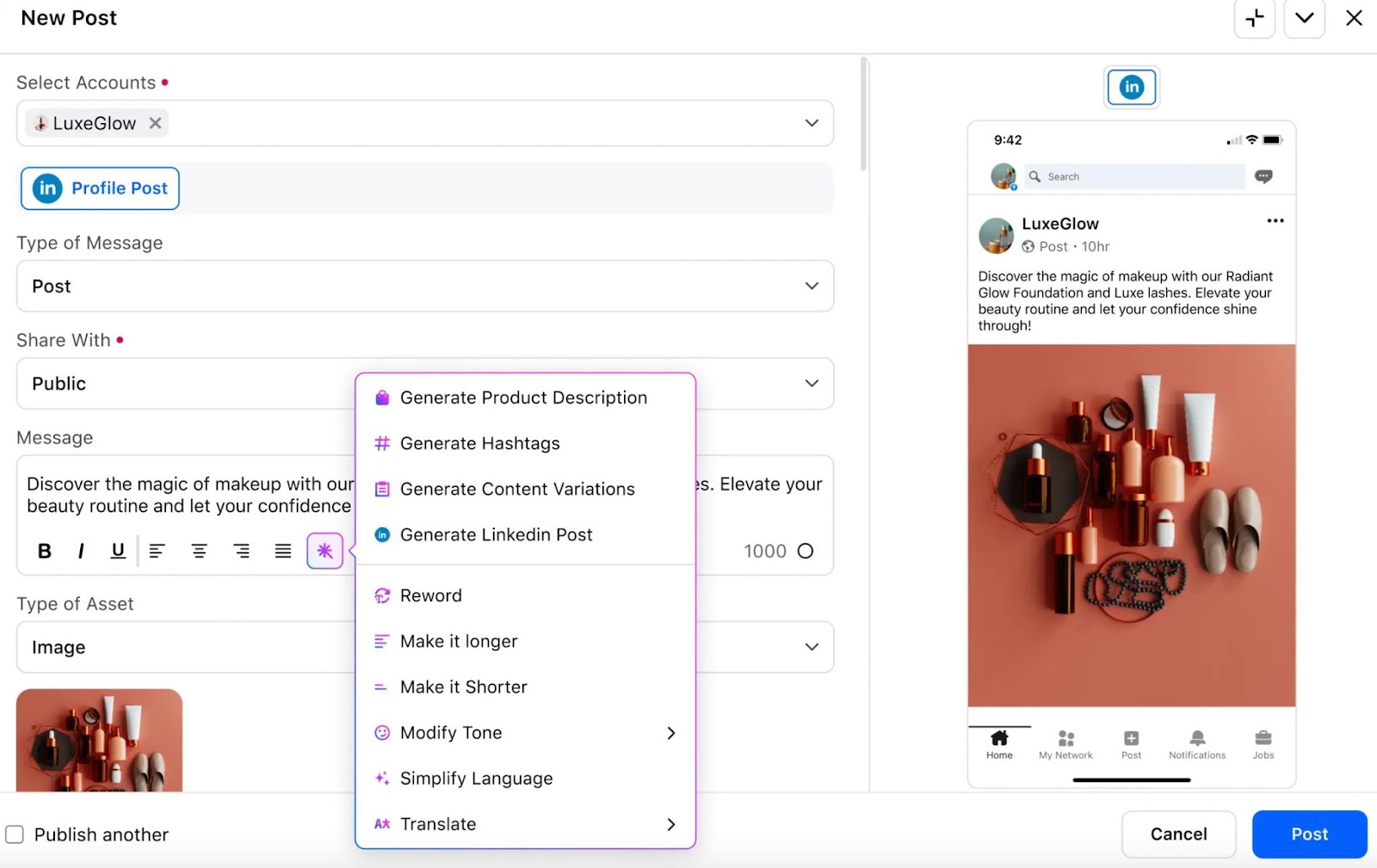
Iconosquare
Iconosquare provides in-depth analytics for Instagram, Facebook and TikTok to help brands understand what content resonates most. The platform’s scheduling tools and audience engagement trends provide insights into what’s working and what’s not at a glance.
Best for: Small to mid-sized businesses, influencers and social media managers
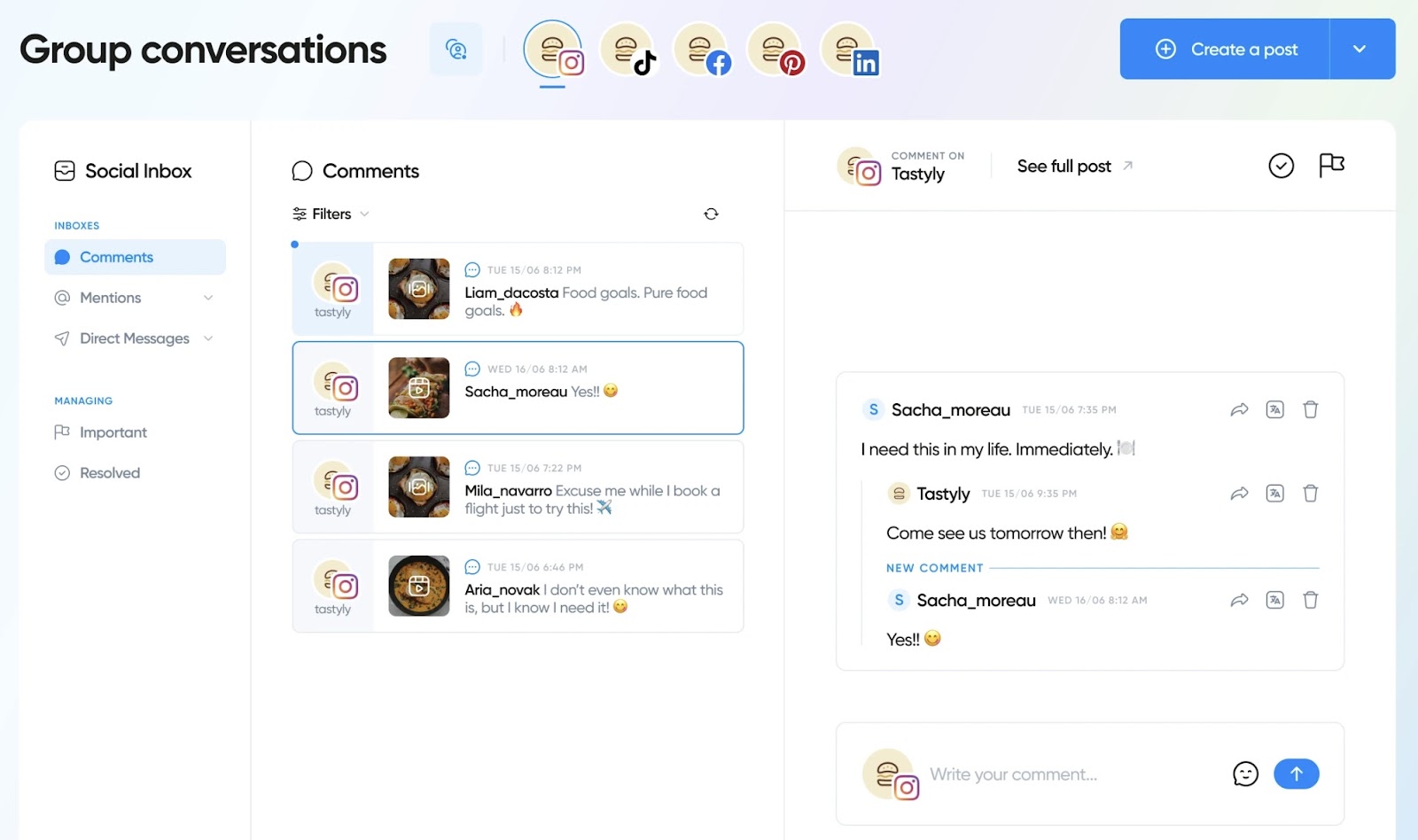
How to measure your social media amplification efforts
To wrap things up, consider the importance of assessing the success of social amplification.
You need to be able to prove social media ROI as well as understand which types of content perform the best among your target audience.
For starters, you need to make the following metrics and KPIs part of your measurement:
- Reach to determine how many unique people saw your content
- Impressions to measure the total views of any given post
- Engagement rate to evaluate which content people interact with the most, relative to your audience size
- Share of voice to understand how your amplification stacks up against competitors
- Referral traffic from social media to connect social activity to your business initiatives
- Shares that highlight user-driven amplification
This yet again illustrates the value of an analytics solution like Sprout that helps brands report on all of the above and demonstrate content ROI.
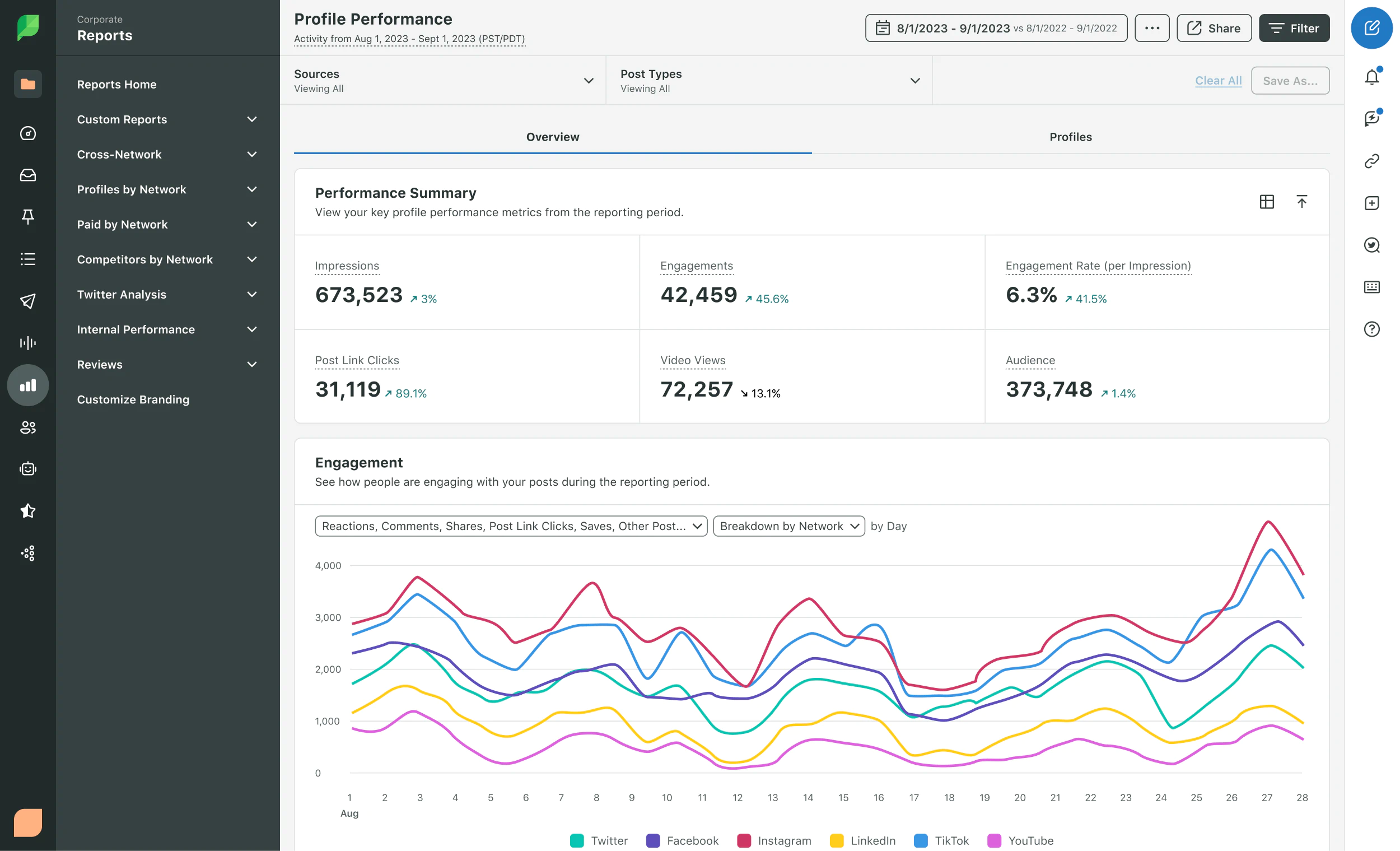
Through detailed performance reports and integrations with tools like Google Analytics, Sprout can demonstrate at a glance how amplification drives business outcomes.
Ready to take social media amplification to the next level?
Social amplification is more than just posting and hoping for the best.
Amplification requires brands to be strategic with content and clearly define goals to boost engagement and ultimately drive leads. With the amplification tactics above, your brand can boost the impact of your messages and content to hit your social KPIs.
If you need a tool to help you do that every step of the way across multiple channels, check out a free trial of Sprout Social to amplify your content more efficiently and effectively.

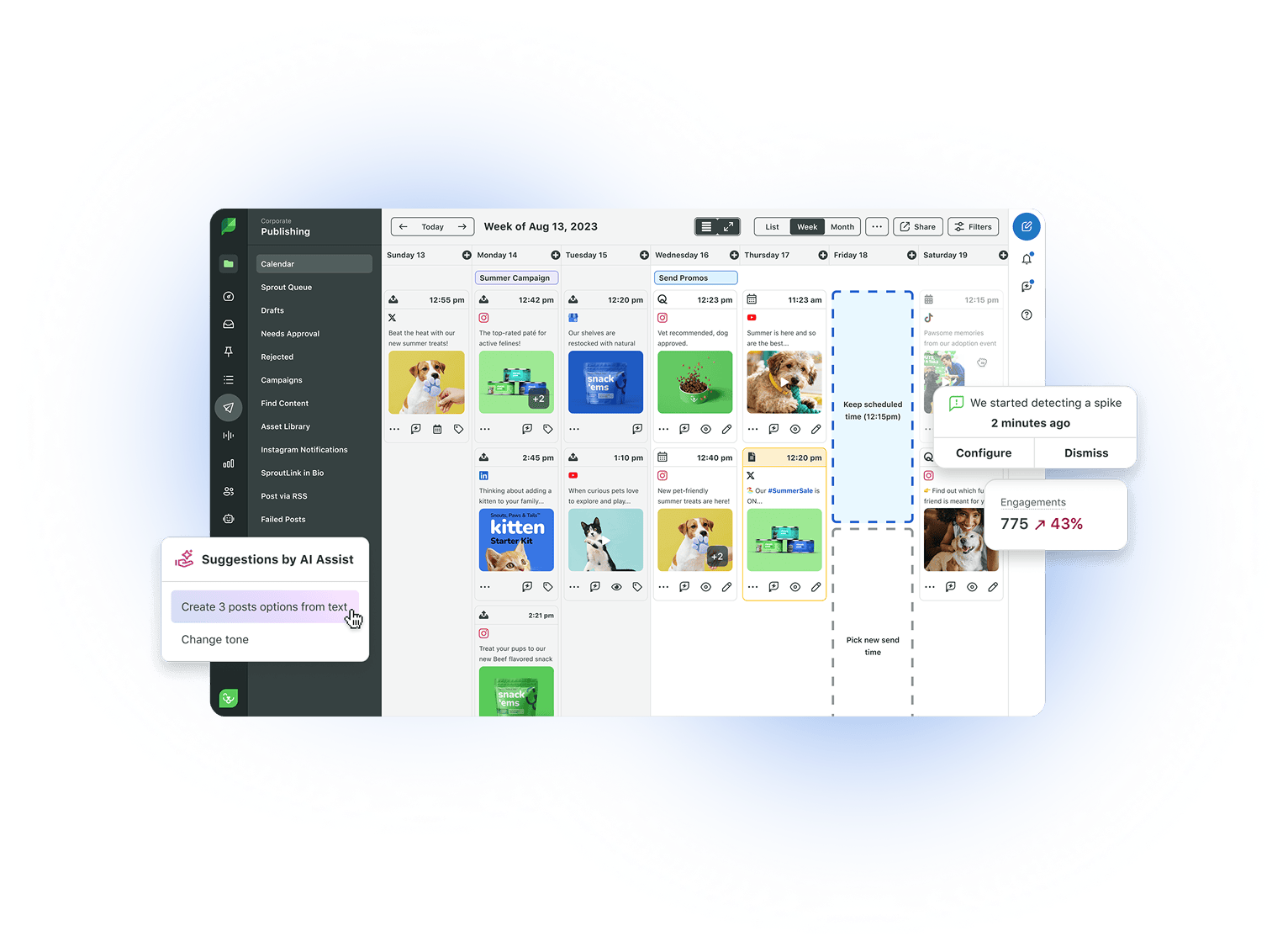
Share